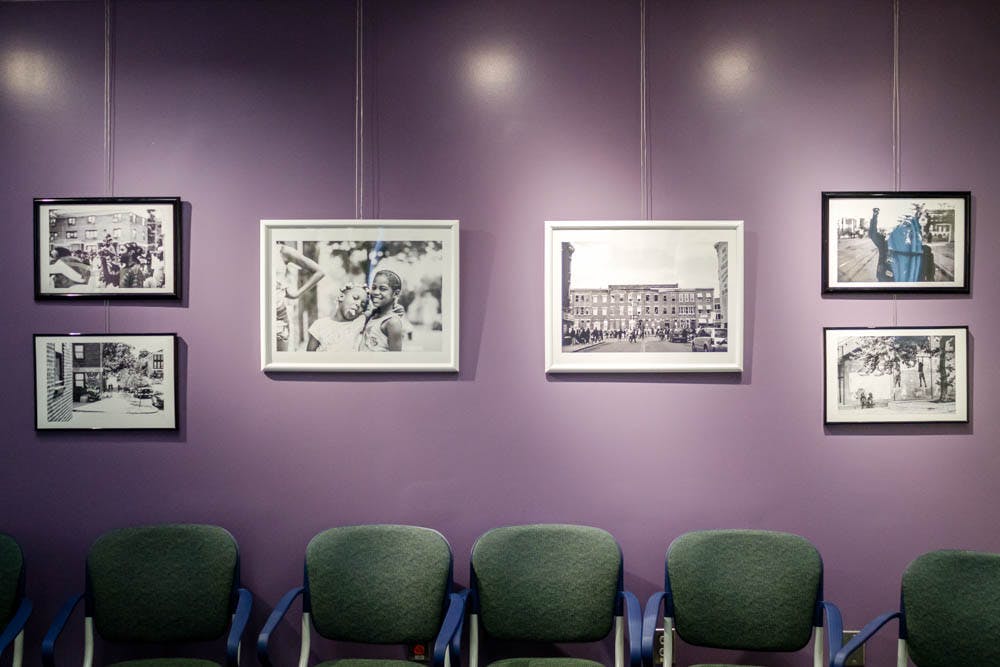The Center for the Study of Race and Ethnicity in America opened an exhibition Sept. 8 called “Rising/Uprising in Baltimore: A Beautiful Ghetto.” The exhibition features work by Devin Allen, a Baltimore photographer who captured life in Maryland’s largest city with breathtaking honesty.
April 25, 2015, Allen was in the streets of Baltimore taking pictures. Photography was a hobby-turned-passion of his since 2013, when two of his closest friends died of gun violence while he was doing a photoshoot. Since that fateful weekend, the self-taught photographer began to dedicate all of his free time to his photography. He could usually be found in the streets, striving to capture the essence of his “beautiful ghetto,” as he calls it, and the community that shaped him.
April 25, 2015 was not an ordinary day in Baltimore. Freddie Gray had been taken into custody by police officers 13 days before, and peaceful protests had unraveled into riots. These were protests that sparked a national debate and highlighted a turmoil that has yet to be resolved. And April 25, 2015, Allen took the picture that captured it all.
The image of a young man running away from a crowd of intimidating armored policemen crystalized the bubbling racial tensions, the deep sense of unrest in Maryland’s largest city and the eerie flashbacks between the final weeks of April 2015 and the grueling, anxious times of the Civil Rights Movement.
The picture was shared on social media by a variety of stars and finally landed on the cover of Time magazine’s May 2015 edition. Allen’s rise to fame was meteoritic. He went from being an amateur photographer whose primary platform of expression was Instagram to having his work printed in the New York Times and the Washington Post and exhibited in museums in Baltimore, Washington, D.C., and New York City.
“When I first saw the news of what happened to (Gray), I knew I was going to cover it,” Allen said in an interview with Time magazine. “I went in thinking I would show the good, the bad and the ugly.” The pictures displayed at the CSREA convey the vulnerability of a young boy gazing up at two anonymous figures clad in police garb, the strength of a community gathering together and the emotions that ran high during the protests.
“Devin’s work is important to show because it counters the demonization of black communities and fear created by the media,” wrote Caitlin Murphy, outreach coordinator and executive assistant of the CSREA in an email to The Herald.
Allen described himself in an interview with the Salzburg Global Seminar as “a self-taught photographer-turned-activist.”
“I’m not an activist by choice; it actually chose me,” he said.
By virtue of what he documents, Allen’s photography is inherently political, but it also serves as a record of his community.
“Allen captures a range of experiences as only an insider could,” wrote CSREA senior researcher Samuel Rosen ’14 on the wall text of the exhibit.
“I see Allen’s work partly as a corrective to a media narrative about black Baltimore that reduces everyone in those communities to the obstacles they face,” Rosen wrote in an email to The Herald.
For Allen, Baltimore is not only the backdrop to what would become a national polemic. It is his home and his city, and this personal connection with his environment shines through in his photos.
“Devin’s work conveys immediacy and inspires activism while also showcasing the joys and the struggles of people living in these marginalized, low-income communities,” Murphy wrote.
Since his rise to fame during the protests of Gray’s death, Allen has been an active member of his community. In summer 2015, he launched a GoFundMe to raise money to buy equipment to teach kids in his community the joys of photography. He gives “cameras to children so that they can capture the world around them and take pride in their communities,” Murphy wrote.





